Life, Death, and Beauty: Damien Hirst in 5 Artworks
Damien Hirst is one of the most influential and controversial figures in contemporary art. His work merges natural science and popular culture with...
Carlotta Mazzoli 16 September 2024
24 March 2021 min Read
Javier Pérez is a postwar contemporary multimedia artist. He does performance art, photography, and sculpture. His ideas move in a circular motive, reflecting on mortality, light, and darkness, metamorphosis, stability and fragility. Specifically, his sculptures are quite haunting and morbid. Beauty and horror are concepts that cannot exist independently. The use of a variety of mediums and a language of metaphors and strong symbolisms contribute heavily to this eerie ambiance of the sculptures of Javier Pérez.
Javier Pérez was born in 1968 in Bilbao, Spain. He studied art in Barcelona and in Paris, where he spent several years of his life. He also shared his time in Berlin. Currently, he lives and works in Barcelona.
One of the central ideas of the sculptures of Javier Pérez is the human body. However, it is not glorified. Rather, it is degendered and becomes fragile. In its fragility, the human body has some very strong assets. For instance, Pérez finds the human skin extraordinary. It is extremely sensitive and fragile, but at the same time it has the strength to control the whole body. Moreover, it provides a safe environment for the delicate network of blood vessels that nurture the entire organism.
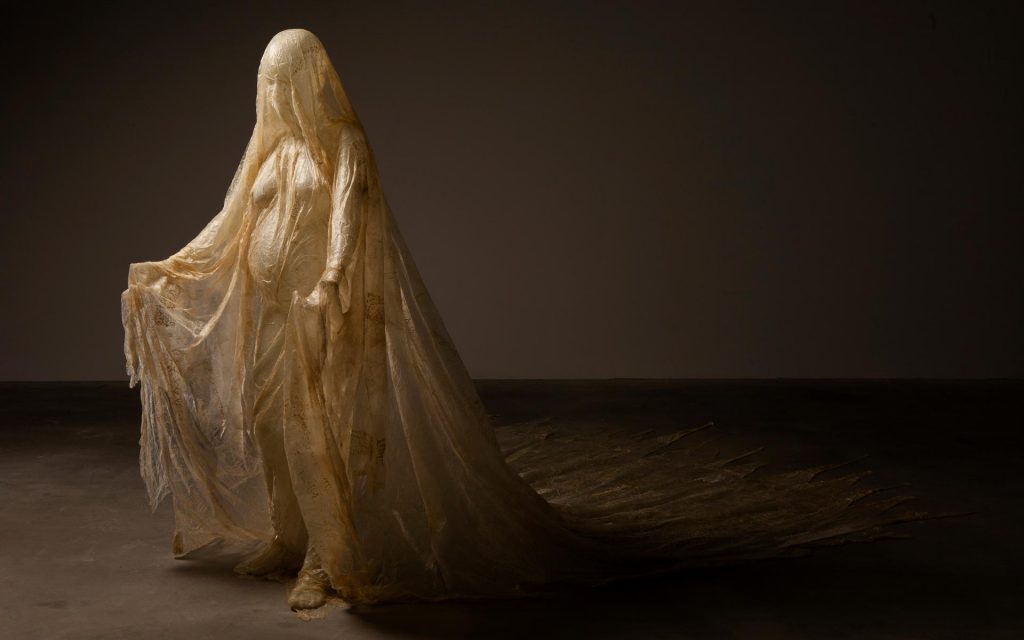
The artist uses a variety of media for his sculptures, such as latex, artificial resin, glass, steel, animal hair, and plant parts. In this way, he creates the opposition of stability to fragility, mortality to metamorphosis, inside to outside, and so on. The cyclical fluctuations use a powerful language of metaphors and symbolism and they underline the temporality of his subjects.
Another motive in the sculptures of Javier Pérez is that he often submits them to shocking procedures, as a means of showing instability; the instability of a world that is constantly trying to be eternal. One of these procedures is the shattered glass, as we see in the sculpture below.
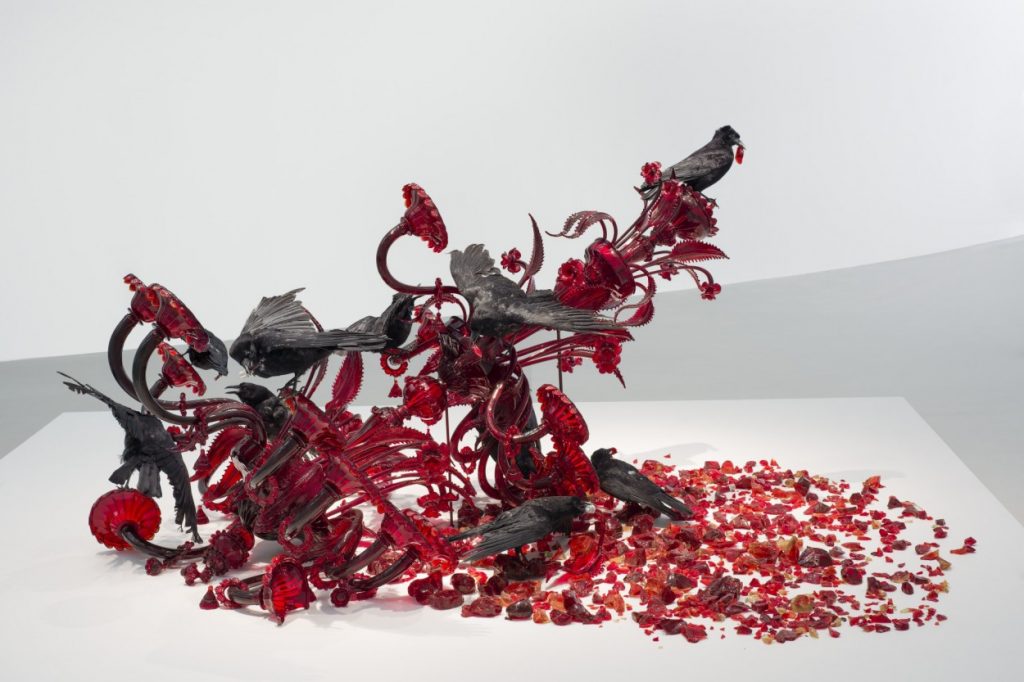
This impressive sculpture consists of a glass chandelier in blood-red color, shattered on the floor. Crows stand on it, feeding on the broken pieces. It is actually a carcass and the blood is all over the floor. It is a metaphor for Murano’s traditional glass industry and its gradual fall. Now, it is only a dead body, with its intestines splattered on the floor, and opportunistic perpetrators gobble it up.
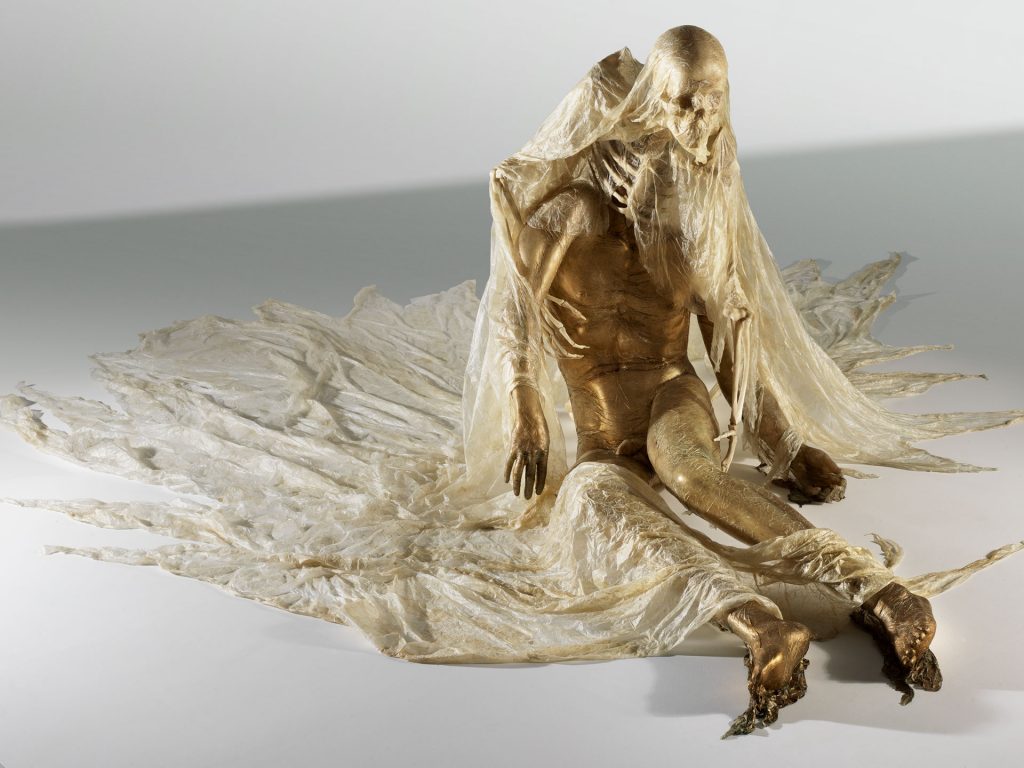
A ghostly mother holds the corpse of her dead son in a tender embrace. She is leaning on his body while covering it with her skeleton fingers so as to protect him. However, this mother isn’t a life-giver, but an incarnation of death. Here, Pérez changes completely the Christian representation of the Mother of Sorrows.
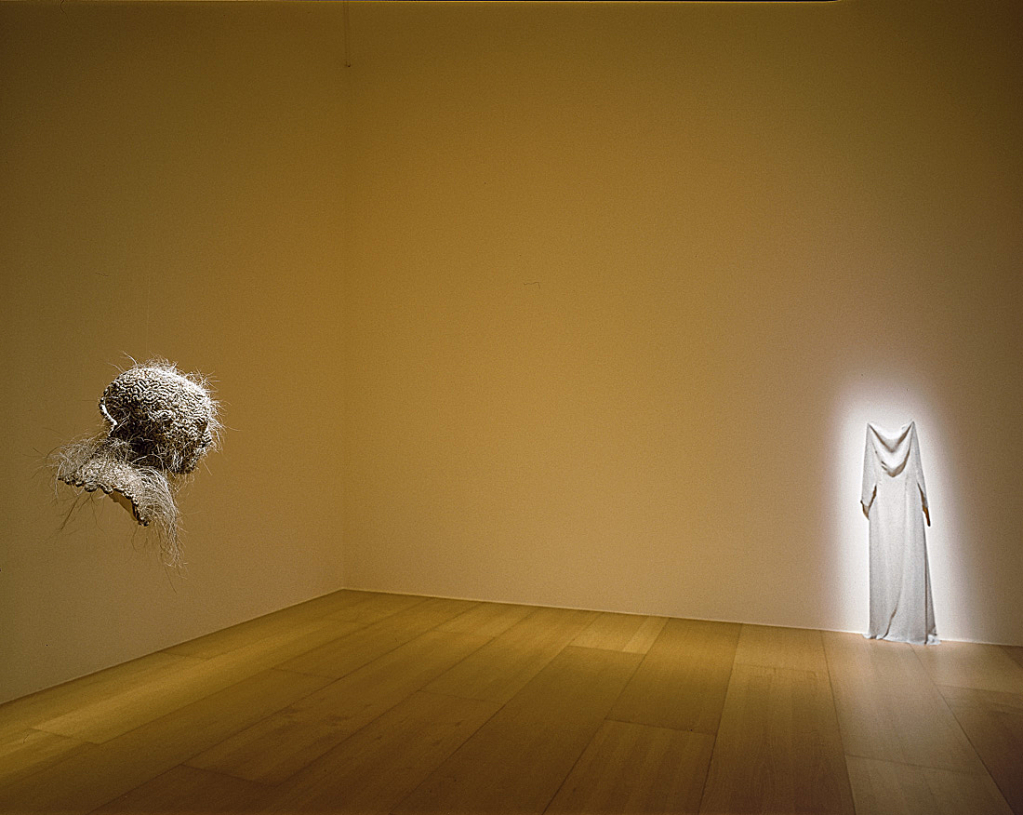
In 1995, Pérez started creating masks for stage performances. This particular mask was created in 1997, for a performance in the opening of a solo exhibition. A model wore the mask and the dress and wandered around the audience. According to him, hiding one’s identity is inherent to human nature. Even the materials are hints. Hair grows from within and becomes an external characteristic. Silk is another material produced on the inside only to protect on the outside. It is a ritual sensibility elicited by the text on the wall, even though it is not visible in the photo above.
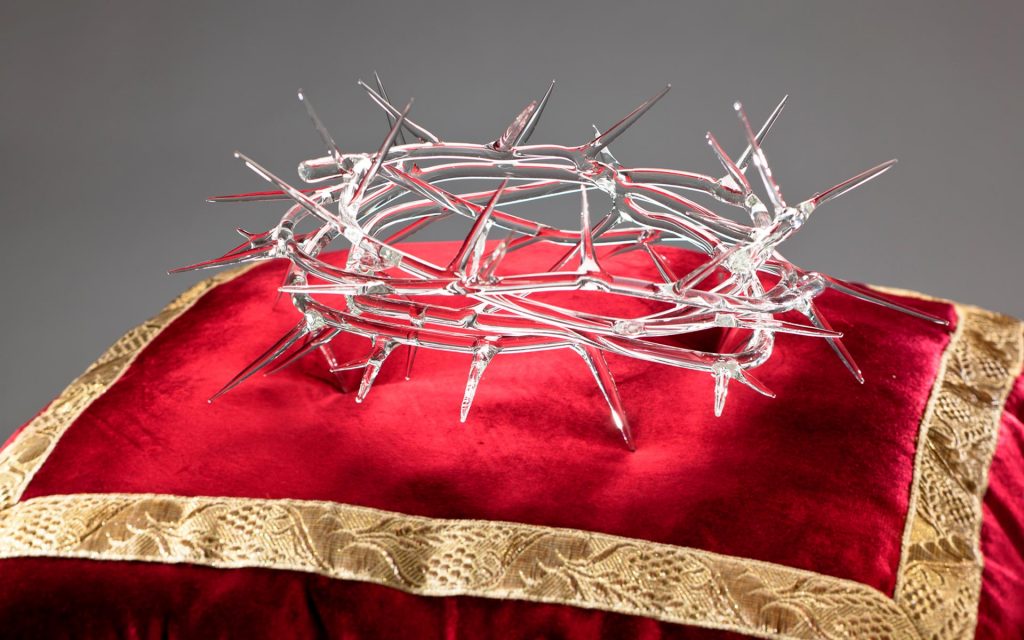
What could probably sum up the sculptures of Javier Pérez is his will to deconstruct specific concepts. Terms such as beauty, spirituality, and cruelty are vital to understanding his work. As he has stated, does beauty exist without violence or pain?
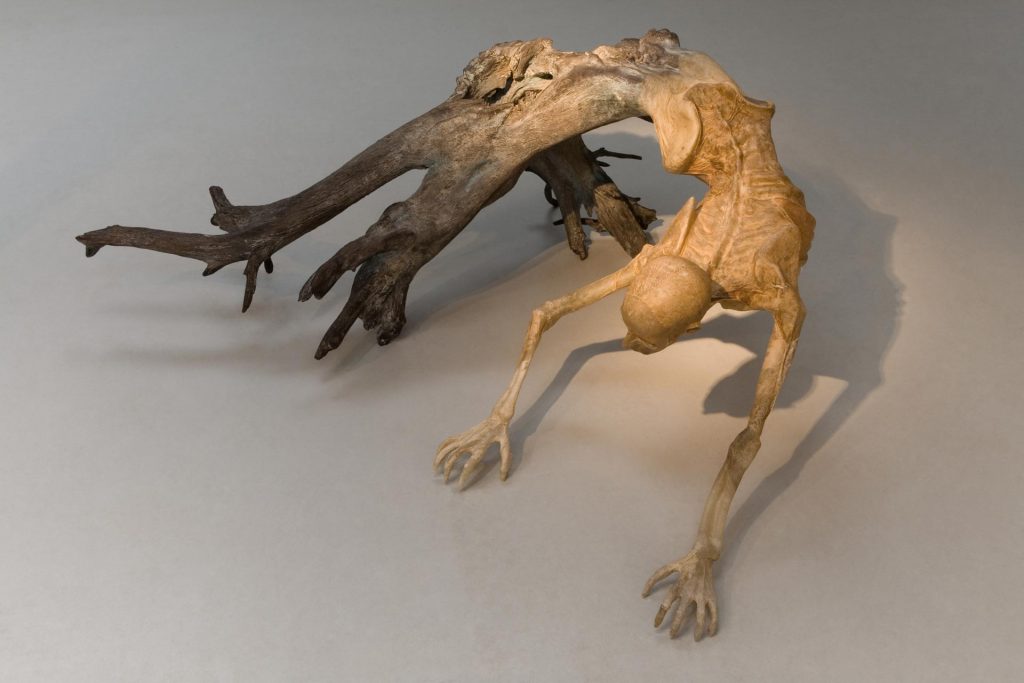
DailyArt Magazine needs your support. Every contribution, however big or small, is very valuable for our future. Thanks to it, we will be able to sustain and grow the Magazine. Thank you for your help!